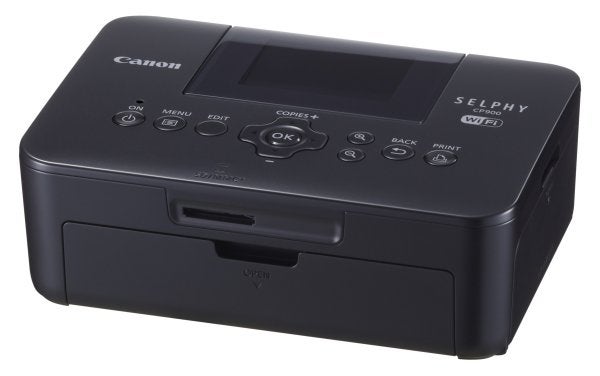Canon SELPHY CP900 Review - Peformance and Verdict Review
Peformance and Verdict
Canon’s SELPHY CP900 is a refined dye-sublimation photo printer.

Sections
- Page 1 Canon SELPHY CP900 Review
- Page 2 Peformance and Verdict Review
- Page 3 Feature Table Review
- Page 4 Speeds and Costs Review
All photos take the same time to print with the Canon SELPHY CP900, though the processing time varies a little depending on the source of the image. The time of the print is fixed because the paper makes four passes back and forwards through the machine at the same speed as each layer of dye is transferred.
Canon claims a print time of 47s for a 15 x 10cm photo, but we reckon this is purely print time, with no allowance for processing. When we printed from a PC, a print took 1:09, though direct from an SD card this was reduced to 59s and, from a PictBridge camera, it dropped to 57s. This was the quickest print we got from the printer. Printing from a Samsung Galaxy Mini smartphone took 1:21.
All these times are very reasonable compared to inkjet photo print times. Sound levels are also good, with a maximum of 58dBA measured at 0.5m.
Prints are sharp and well defined, though colours can be a little lacklustre when compared with inkjet equivalents. You can tweak the colour levels up, of course, but at default settings, reds in particular come across as a little brown. Colour gradations are smooth and shadow detail is reasonable, though with a little loss in the darker hues.
Consumables are sold in packs containing paper and film cassettes, and the 108 print pack is the more cost effective. At the best price we could find, this gives a print cost of 18.9p, which is high compared with equivalent inkjets. Low-end all-in-ones, like Canon’s own https://www.trustedreviews.com/canon-pixma-mg2250_Printer_review PIXMA MG2250, give costs of around half this.
Verdict
The Canon SELPHY CP900 is a dye sublimation printer come of age, with direct wireless connection to mobile devices, and quick and easy print from PC or via its self-contained controls. Running costs are high compared with typical inkjets, but print quality is generally good and photos are dry and more robust, even straight out of the printer.

